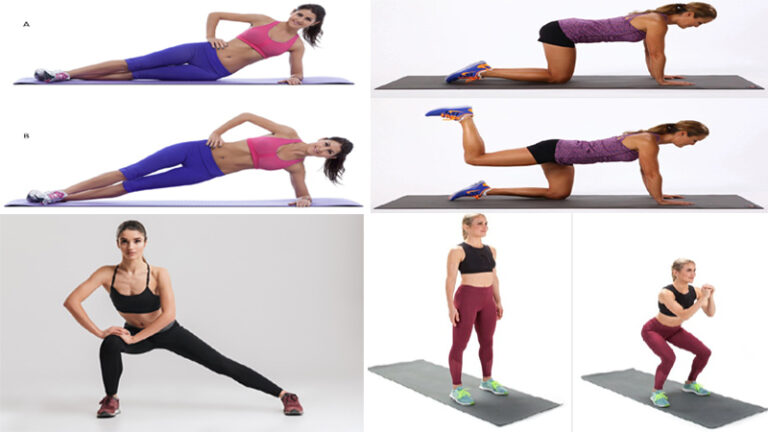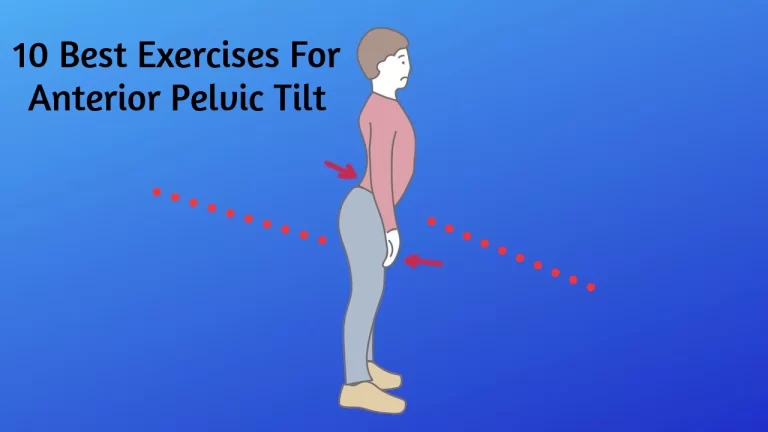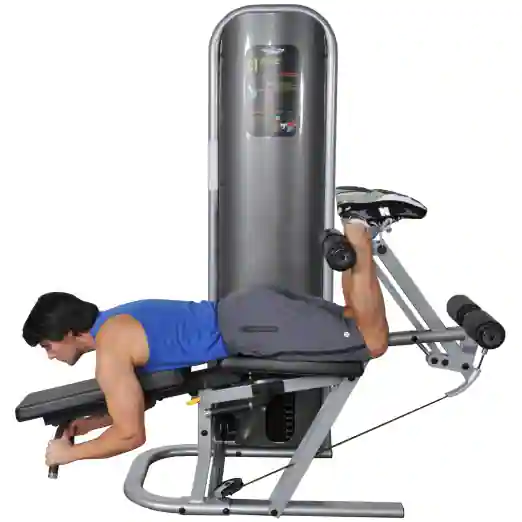Exercise for lock jaw:
Trismus is also called lockjaw. This can be caused by trauma or injury to the mastication (chewing) muscles. You need your chewing muscles for chewing your food and opening your mouth. Without it, it would be hard to eat, talk, brush your teeth, or swallow the food.
Lockjaw usually resolves itself in less than 2 weeks, but it can be very painful in the meantime. A permanent lockjaw can occur too. Whether trismus is around for days or months, daily performing exercises and massaging can ease the temporomandibular joint pain.
If you are suffering from trismus, you know it can affect your eating, talking, and oral hygiene very difficult. It is important to exercise your jaw to help it get stronger. Static stretching (holding a stretch) is a good way to test the limits of your jaw mobility; however, passive movement (moving parts of your body) used several times per day has proven to be very effective in decreasing inflammation and pain.
However, if exercising and stretching do not help, talk to your doctor or another healthcare provider. Medications such as non-steroidal anti-inflammatory drugs (NSAIDs), muscle relaxants, and steroids are usually the next step.
You may not think about your temporomandibular joints (TMJ) much, but you use them a lot of times. These joints connect your jawbone to your skull. Your TMJ is used in action every time you talking, chewing, and swallowing.
TMJ disorders occur when something went wrong with your jaw joints and jaw muscles. mostly, this happens because of a jaw injury, inflammation such as with arthritis, or overuse.
Trismus occurs due to:
Injury to the jaw
Oral surgery
Mouth infection
cancer
Radiation therapy for cancers of the head and throat.
TMJ disorders may be caused due to mild debilitating symptoms, such as:
- Pain during chewing
- Pain in your ear, face, jaw, and neck clicking, grating, or popping sounds in the jaw when you open or close your mouth locking of the jaw joint headaches
About Your Jaw
Our jaw is made up of a pair of bones. These bones form the framework of your mouth and teeth.
The maxilla is your upper jawbone.
The mandible is your lower jawbone.
The temporomandibular joint (TMJ) is where your mandible connects to your skull.
Your masseter muscle is the muscle that connects your mandible to your skull.
About your jaw muscles
Jaw-closing muscles:
- Masseter, temporalis, and medial pterygoid
Jaw-opening muscles
- Lateral pterygoid and digastric
TMJ pain may also be managed with simple lifestyle changes. You may wish to:
- You have to eat a soft diet to allow the TMJ to relax
- You have to avoid chewing gum
- You have to avoid biting your nails
- You have to avoid biting your lower lip
- Try to maintain good posture
- Limit large jaw movements, such as yawning and singing
- You can use pain relievers such as ibuprofen and acetaminophen may help relieve TMJ pain.
Muscle relaxers may be used to relieve severe pain. Doctors may also recommend:
mouth guards to prevent teeth grinding and jaw clenching mouth guards to help realign your jaw use warm towels over the mouth ice, no more than fifteen minutes per hour, and not directly on the skin stress-relief techniques to help prevent behaviors that cause jaw tension acupuncture to relieve pressure in the affected area
Severe pain a occurs due to damaged joints may require more invasive treatments, such as corticosteroid injections into the TMJ. Surgery may be considered as a last option. There is not any scientific evidence that surgical interventions for TMJ disorders are safe and effective.
These exercises aim to create movement in your jaw muscles to prevent inflammation and pain. The stretching exercises can be repeated multiple times a day, and consist of opening and closing your mouth.
Before you start these exercises, you have to massage your cheek muscles using your pointer and middle finger on your cheekbone. Run your fingers down to your masseter muscle (muscle on the side of your face), which connects your jaw bone to your skull. Move your fingers in a clockwise motion for 20 seconds, 2 to 3 times a day. This movement helps you to loosen your jaw.
Here, we explain different exercises for locking the jaw:
Relaxed jaw exercise
How to do it?
Rest your tongue gently on the top of your mouth behind your upper front teeth. Allow your teeth to come apart while relaxing your jaw muscles.
Goldfish exercises (partial opening)
How to do it?
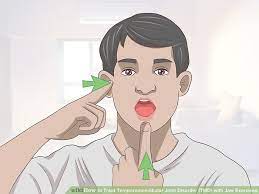
To perform this exercise move your tongue on the roof of your mouth and put your index finger in front of your ear where your TMJoint is located. Place your middle finger on your chin. Drop your lower jaw halfway and then close it. At that point, you feel mild resistance but not pain. A variation of this exercise is that place one finger on both TMJ as you drop your lower jaw halfway and closed again. Do this exercise 7 times in one set. You should do one set seven times daily.
Goldfish exercises (full opening)
How to do it?
your tongue should be placed on the roof of your mouth, put your index finger on your TMJ and another finger on your chin. Drop your lower jaw completely and back. For a variation of this exercise, put one finger on both TMJ as you completely drop your lower jaw and back. Do this exercise seven times to complete one set. You should complete one set seven times daily.
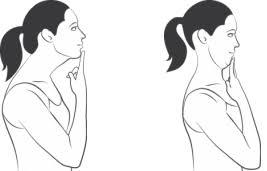
Chin tucks
How to do it?
Put your index finger on the chin. now you have to pull the chin and head straight back until a good stretch is felt at the base of the head and upper neck, make sure you do not do the movement from the finger. (There should now be some separation between the chin and finger.)Hold for five seconds and repeat ten times.
Resisted opening of the mouth
How to do it?
Put your thumb under your chin. Open your mouth smoothly, pushing gently against your chin for resistance. Hold for 3 to 4 seconds, and then close your mouth slowly.
Resisted closing of the mouth
How to do it?
To perform this exercise you have to Squeeze your chin with help of your index finger and thumb in one hand. Close your mouth as you put gentle pressure on your chin. This will help to strengthen your muscles that help you for chewing.
Tongue up
How to do it?
In this exercise you have to move your tongue to the roof of your mouth, now slowly open and close your mouth.
Side-to-side jaw movement
How to do it?
To perform this exercise you have to Put a ¼ inch object like a tongue depressor in between your upper and lower front teeth, and slowly move your jaw from side to side. As this exercise becomes easier, increase the thickness of the object between your teeth by stacking them one on top of each other.

Forward jaw movement
How to do it?
Put a ¼ inch object between your front teeth. Move your lower jaw forward so your bottom teeth are in front of your top teeth. As this exercise becomes easier, increase the thickness of the object between your teeth.
There have different ways to manage your TMJ pain.
Neck Stretch
How to do it?
Stretching the neck is another way to maintain good posture and reduce tension in your neck and jaw muscles.
Step 1: Flex your head forward then move backward.
Step 2: Move your head to the left and then to the right.
Step 3: Slowly flex your head, pulling your ear to your shoulder while keeping your shoulder relaxed, as far as possible. Stop if you feel any pain. Repeat this on the other side.
Hold this stretch for 20 to 40 seconds, and repeat three times.
Active Jaw Stretching Exercise
How to do it?
This exercise will stretch your jaw muscles, but should not cause pain. If you experience pain, then perform a gentle stretch.
Step 1: Hold your head steady and open your mouth as wide as possible for you. Hold for ten seconds.
Step 2: Move your lower jaw to the right, and hold for 5 seconds.
Step 3: Move your lower jaw to the left, and hold for 5 seconds.
Step 4: Move your lower jaw in a circle to the left.
Step 5: Move your lower jaw in a circle to the right.
Repeat 5 times, and do these 3 times a day.
Passive Stretching Exercise
How to do it?
This exercise is meant to lightly stretch your jaw muscles, to relieve trismus pain.
Step 1: Place your thumb on your top teeth in the middle of your jaw.
Step 2: Place the index finger of your other hand on your bottom teeth in the middle of your jaw.
Step 3: Open your mouth as wide as comfortable by you, using your fingers to give extra resistance. Hold this stretch for 5 to 10 seconds. Stop if you feel any pain.
Repeat this 5 times.
Safety Considerations
- Lockjaw can be very painful and have many impacts on your daily activities. If these exercises become painful, then stop immediately and Do a simple massage on your jawbones. If you feel severe pain, talk to your doctor or a physical therapist.
- Along with the exercises above, make sure you are maintaining good oral hygiene by brushing your teeth and tongue three times a day, cleaning removable dental pieces, and flossing your teeth before bedtime.
- Also, be aware of clenching your jaw in stress or out of habit. Try to keep your jaw muscles relaxed for the best results.

